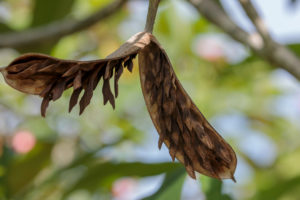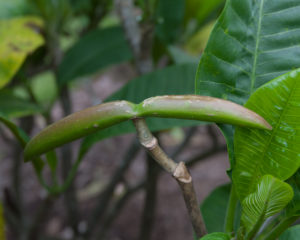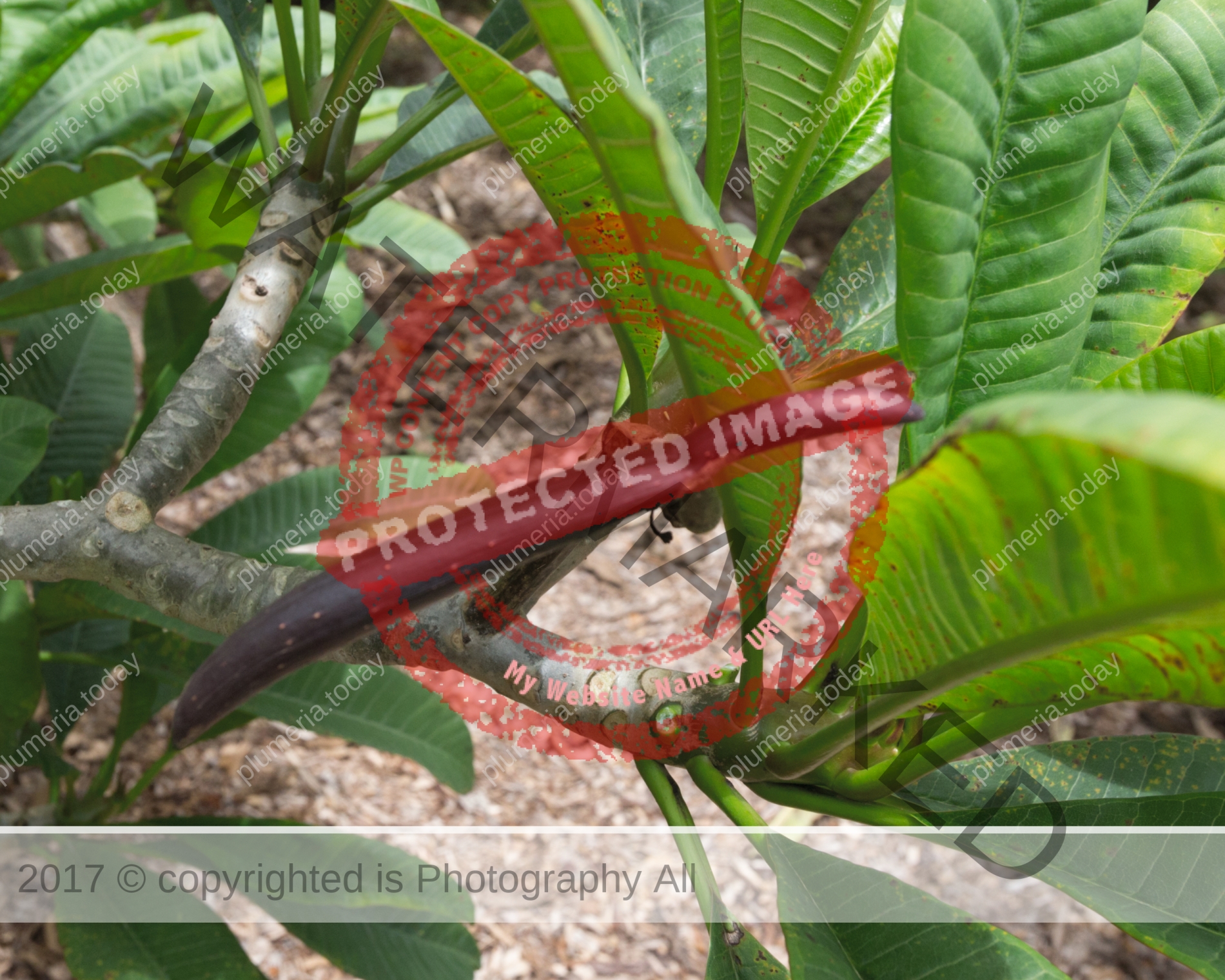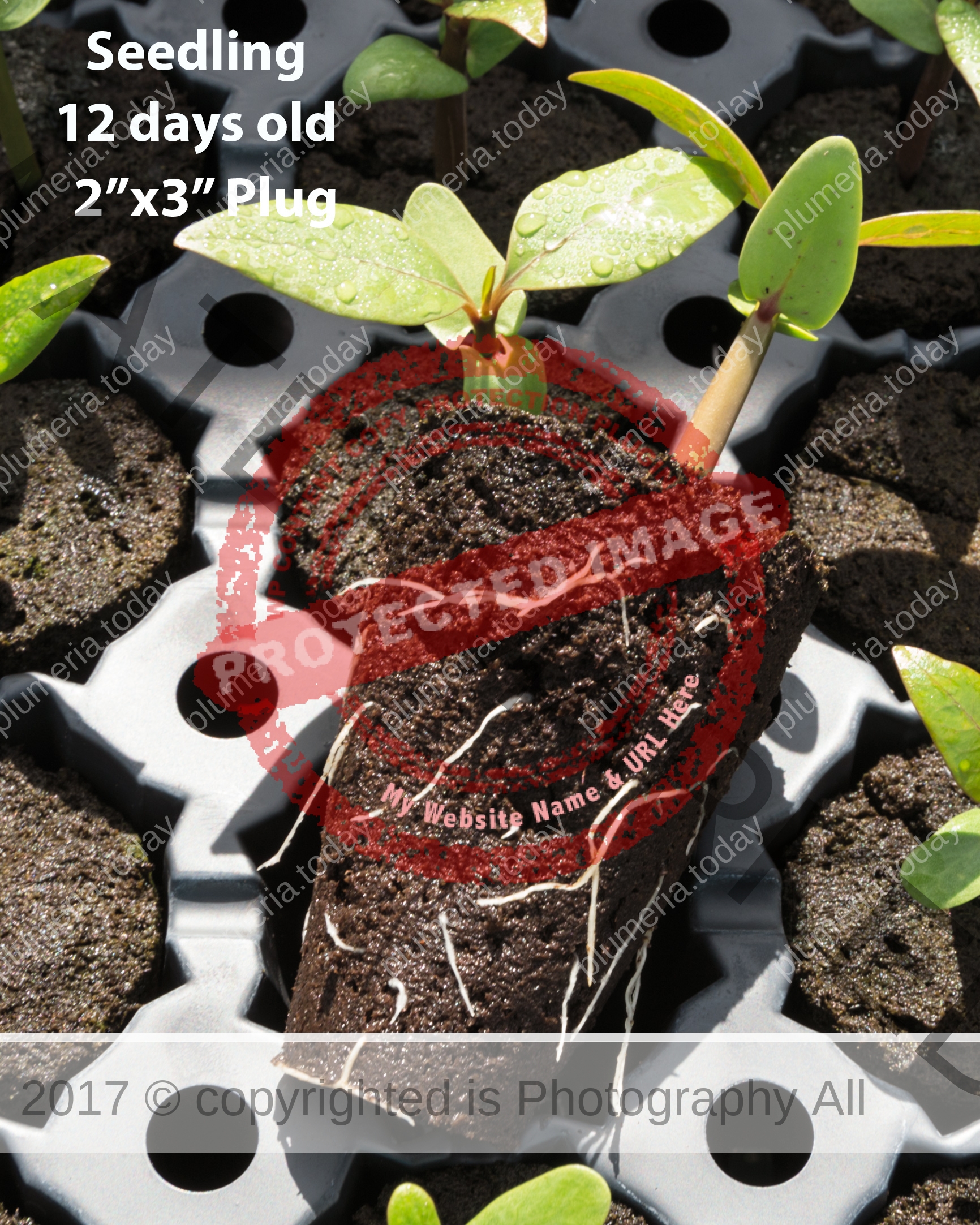Plumeria Seeds
When germinating plumeria seeds at home or in a greenhouse, the first thing to remember is plumeria seeds may be started indoors, but should be transplanted and moved to a location that provides plenty of light as soon as it has 3 or 4 real leaves. Leaving a seedling in small containers may result in disrupted growth, which can lead to unfavorable results. However, starting plumeria indoors is a great way to get an early jump on the outdoor growing season. When choosing a medium in which to germinate plumeria seeds, look for one that says something along the lines of, “seed starting mix.” This type of growing medium will likely have a moderate elemental fertilizer charge, which will benefit the newly sprouted seedlings. Seeds can be germinated in many different styles of trays and containers, so choose the type that best fits your space needs. If starting just a few seeds, a simple, flat starting tray or small individual containers will work great. When planting many seeds at once, it may be wise to use trays that are divided into separate growing chambers. This will cut down on the amount of transplanting needed as the plants grow. Remember, all a plumeria seed needs to germinate is warm temperatures and moisture. Some growers do use heat pads underneath the starting trays. Most plumeria seeds will germinate at temperatures between 65-90 degrees Fahrenheit and the added warmth in the growing medium can speed up the germination process. Using supplemental lighting, like a T5 fluorescent bulb, can also help provide extra heat. Though seeds may not need light in order to germinate, the seedling will need light, so having a light source ready is a good idea. I would use caution when starting seeds in a bright window sill because direct sunlight through glass can alter the intensity and the seedlings may stretch and become ‘leggy.’ (There are many good plumeria seed germination methods, I suggest you research each one and use the one or ones that fit you situation.)
When preparing to germinate seeds indoors it is a good idea to soak the seeds overnight or at least 4 hours in a warm place. Also moistening the growing medium before planting any seeds. This will help to ensure that the medium is not over saturated or water logged and that the moisture is spread evenly throughout. Using a tray, spread the seeds so they have about an inch between each, this will help minimize the root damage when transplanting. I have found using plugs is much easier to handle and preserves the roots when transplanting. There are many good planting methods and you should examine each to see which fits your situation and may help result in higher germination rates. If planting is occurring in a flat starting tray, space seeds at least an inch apart, either in rows or in a grid pattern and cover lightly with 1/4″ of growing medium (remember oxygen is important during germination, so don’t pack the medium down to much). Then, spray the entire tray lightly with a hand held mister. The soil should be kept moist not wet long enough for the seeds to germinate, it may need to be sprayed with the mister occasionally to maintain even distribution of moisture. Some growers use starting trays that have plastic, hood-type lids. This will keep the humidity around the seeds at higher than average room levels and may help increase the chance of successful germination. Be sure to check the seeds daily to maintain an optimal environment.
Environmental Considerations
As the plumeria seedlings begin to pop up through the soil, there are a few environmental aspects that should be given proper attention right away: light intensity, humidity, and air flow. Remember the seeds of different cultivars may germinate in different lengths of time. Usually plumeria seeds will germinate in 5-10 days, but I have seen it take up to 30 days if conditions aren’t right. Plumeria seeds can sprout in total darkness, but, once the seedling breaches the soil, a sufficient light source is imperative. Those first “true leafs” will need a light source to perform photosynthesis and create carbohydrates, which will help sustain both normal plant growth and, most importantly, root growth. Without proper lighting, the early vegetative growth of a plant can be negatively affected and could cause long lasting problems.
Humidity can be helpful during the initial germination process but, as the seedlings begin to grow, high levels of humidity can spell disaster. As internal process burn up the seedlings energy sources, the plants will need to release oxygen as a gas through their stomata (a process called transpiration). As the oxygen leaves the plant, water and elemental nutrients are pulled up through the roots. In a humid environment, the stomata will remain closed and the roots will not take in water. If the growing medium is wet without proper aeration, the water will have nowhere to go and the roots will likely suffocate and die.
Air flow and humidity almost go hand in hand. A nice flow of air through the plants canopy will encourage the flow of carbon dioxide to the leaves and, subsequently, oxygen away from them. This is not just true for seedlings, but for plants in all stages of growth. A small fan on medium or low can help keep humidity levels low and the heat from any supplemental lighting to a minimum. Be sure to keep the rooting medium moist, but not too wet. Seedlings need water and going to long without can result in serious damage. However, if the medium remains too wet for too long it may impair root growth. As the seedlings grow, they will eventually exhaust any nutrient charge that the growing medium had to offer, so light fertilization may be needed while waiting to transplant into a different container.
As the seedlings grow, with proper care and attention, they inch closer and closer to fulfilling their own unique destiny. Every plumeria seeds has it’s own DNA structure and will not be exactly like any other. As we stand by, eagerly awaiting the flowers of our labor, it is important to remember that every plumeria we grow has entered into this life as a small, almost insignificant looking thing, that so many refer to as simply, just a seed.



